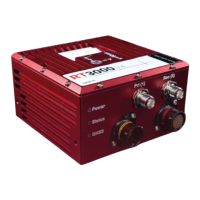Oxford Technical Solutions Ltd Page 65 of 110
appear in the list more than once. At a data rate of 100 Hz, each message in the Status tab will be transmitted
on the CAN bus once per second.
The Prefix and Suffix boxes can be used to quickly add alpha-numeric strings to the beginning and end of all
message names, while the Identifier offset box allows users to quickly apply an offset to all CAN IDs. These
tools are useful when IDs conflict with other equipment and changes need to be made to many channels.
Positive and negative integer values can be entered into the Identifier offset box in both decimal and
hexadecimal formats. Data entered in hexadecimal format should end with an “h”. To remove the offset, type
0 in the identifier offset box.
The Enabled checkbox quickly enables and disables all status messages.
The Message name, Signal name and Units can be edited in the table. Changes made using NAVconfig are
independent of the DBC file, and will not affect it or be saved.
CAN FD (CAN with Flexible Data-Rate) is an extension to the original CAN bus protocol specified in ISO 11898-
1. CAN FD was created to accommodate increases in bandwidth requirements within automotive networks. The
CAN FD protocol has brought the software closer to “real time” through the minimisation of delays between an
instruction and transfer of data (latency) and higher bandwidth.
Enable CAN-FD by selecting it from the CAN version dropdown. Figure 33 displays the options available when
configuring the RT for CAN-FD output.

